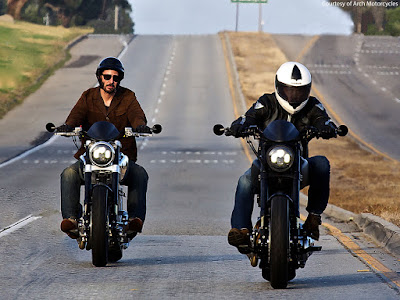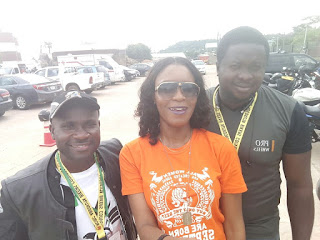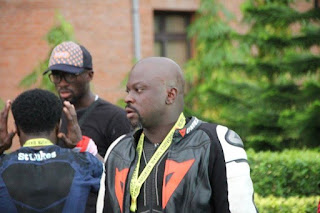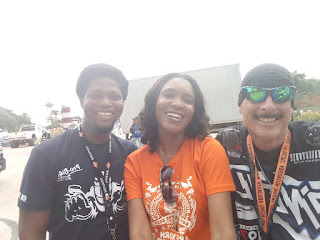For a beginner, there are few things more disappointing than getting psyched up to go riding only to be hit with the realization that your motorcycle won’t start. The engine is turning over, but nothing is happening except for the fact that your frustration level is rising. Before you decide to give up on your bike or worse, you can try to troubleshoot your bike to see what the problem really is.
Unless you have one of those new all-electric motorcycles, your bike needs three main things to run:- Spark, Fuel/Air mixture and Compression. Your bike will either run rough or not start at all without the proper amounts of any of those elements. You can break these elements down and troubleshoot each one until you find the reason why your bike is not starting. Below are some of the basic steps that you can take to get your motorcycle started and back on the road again.
Unless you have one of those new all-electric motorcycles, your bike needs three main things to run:- Spark, Fuel/Air mixture and Compression. Your bike will either run rough or not start at all without the proper amounts of any of those elements. You can break these elements down and troubleshoot each one until you find the reason why your bike is not starting. Below are some of the basic steps that you can take to get your motorcycle started and back on the road again.
Spark/Ignition
Electrical problems are often the most frustrating thing to troubleshoot for everyday riders. Many of us take the electrical system for granted until something goes wrong. If you have no experience, it can be puzzling to figure out. Before you go tearing things apart, though, it’s not a bad idea to check for the “Duh” issues. Make sure that your key is turned to “On” or “Run” and that the kill switch is in the “Run” position as well. Also make sure that the bike is in neutral and that your kickstand is up. These may sound like no brainers, but if you go to doomsday mode right away (which many of us do), you can easily overlook the simple things.
With the “Duh” issues resolved and your bike still not starting, it’s time to investigate further into your engine spark. A great place to start is at your spark plugs. When you start here, you can keep tracing it back until you find your ignition or spark issue. To test your spark plugs, remove them from the cylinder head and then plug them back into the plug cap. Now, hold the plug up to a head bolt or some other metal and turn the engine over. You should be able to see a spark from electrode traveling to the metal. No spark or weak spark? Try changing out your plugs to see if the results are any different. If not, then you will have to test further.
You can start by checking out your plug wires and caps. Your bike will usually still run rough if these are bad, but you can visually inspect them fairly fast. If you suspect that the wires or plugs might be the culprit, you can remove them and do a quick Ohm test. Next, you will want to check your ignition coil followed by the CDI box, rectifier/regulator and all other electrical components. Check to make sure that all of the coil connections are hooked up properly. Troubleshooting these components require a more involved process that would be covered in a whole other post.
With the “Duh” issues resolved and your bike still not starting, it’s time to investigate further into your engine spark. A great place to start is at your spark plugs. When you start here, you can keep tracing it back until you find your ignition or spark issue. To test your spark plugs, remove them from the cylinder head and then plug them back into the plug cap. Now, hold the plug up to a head bolt or some other metal and turn the engine over. You should be able to see a spark from electrode traveling to the metal. No spark or weak spark? Try changing out your plugs to see if the results are any different. If not, then you will have to test further.
You can start by checking out your plug wires and caps. Your bike will usually still run rough if these are bad, but you can visually inspect them fairly fast. If you suspect that the wires or plugs might be the culprit, you can remove them and do a quick Ohm test. Next, you will want to check your ignition coil followed by the CDI box, rectifier/regulator and all other electrical components. Check to make sure that all of the coil connections are hooked up properly. Troubleshooting these components require a more involved process that would be covered in a whole other post.
Air/Fuel Mixture
 |
| Yes some superbikes still have these |
These aren't common but yea some bikes still have them. Once again, you will need to check for those “Duh” issues with your fuel. Is your fuel petcock turned to on or reserve? Is there even gas in the tank?
The most common time that you will encounter fuel problems is when you try to start your motorcycle for the first time after being stored for a long period of time. After a while, the gas can break down if it was not properly stabilized and will lose enough octane so that it will not combust. Gas blended with ethanol seems to break down even faster. Fresh gas can make a huge difference in your engine’s ability to start and run.
Sitting for long periods of time can also dry out your fuel system. Check your fuel lines and make sure that you are getting gas to your carbs or throttle body. Fuel lines can dry out and crack. Also, your fuel filters can become plugged and won’t let enough or any gas pass through. Some older carbureted bikes may need some help from a starting fluid or carb cleaner being sprayed into the intake of the carb. Once the bike fires on the starting fluid, it will usually help draw the gas through the fuel system. If your bike continues to die after running on the starting fluid, you should try to troubleshoot elsewhere. Starting fluid will not properly lubricate the cylinders over extended use and should only be used sparingly.
A clogged vent tube on your gas tank can also restrict the gas from flowing through the system.
Another fuel issue is that your bike might not start because it is flooded. To un-flood the engine, you will need to remove the spark plugs. Once they are removed, turn off the choke and turn the motor over until the excess gas has dissipated or if you have time, you can just let the bike sit until it evaporates.
If you are still having problems with the flow of your fuel, you will need to clean the carbs. When the old gas breaks down in the carburetor, it can leave some junk and block your jets. Once your carbs are clean, you will want to make sure that your fuel pump is working properly as well.
Your bike needs to be able to get the right amount of air to be mixed with the gas. A broken or loose vacuum line can result in too much air being drawn into the combustion chamber, which will alter the air/fuel mixture and not allow the engine to ignite the mixture properly. Check your vacuum lines for cracks and holes. Conversely, too little air can be the culprit as well. Make sure that air can pass through your air filter/intake. A dirty filter is an easy fix.
Compression
You might want to save testing for compression until it’s the only thing left to troubleshoot. The results of this can be the most devastating. If one or all of your cylinders have low or no compression, your engine will not fire properly or at all. The air/fuel mixture needs to be compressed to raise its temperature to a point where it can become combustible. Without enough compression, the mixture will not ignite.
To check the compression, you will need a compression tester. Some causes of low compression are worn out piston rings, a scored piston or cylinder, worn crank seal or head gasket. Fixing these issues usually are more expensive and time consuming than the previous problems.
To check the compression, you will need a compression tester. Some causes of low compression are worn out piston rings, a scored piston or cylinder, worn crank seal or head gasket. Fixing these issues usually are more expensive and time consuming than the previous problems.
From this point on.... Dial your mechanic's number....
We would appreciate your thoughts and suggestions below...



































